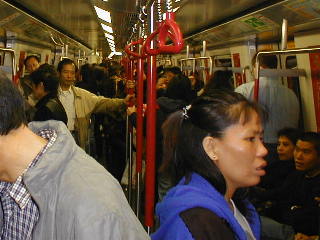
Last update 30 August 2005
This page was created to support the development of a paper looking beyond the impact of 9/11 and the "war on terrorism" on perceptions of risk and transport choices to an additional threat.
The paper was presented at a plenary session of the Alternative Mobility Futures Conference organised by the Mobilities Group and the Department of Sociology, University of Lancaster, January 2004.
The CeMoRe group at Lancaster is publishing an edited book from the conference and the paper has been developed as a chapter for that book to be published in January 2006:
Little S.E. (2006) "Twin Towers and Amoy Gardens: mobilities, risks and choices" in Mobile Technologies of the City Sheller M. & Urry J. (eds), Routledge, London and New York
.
| The compact, high density of housing developments in Hong Kong has allowed parts of the Island and New Territories to remain relatively undeveloped. However, while high density development supports a world class public transport system in Hong Kong, it also creates problems for the control of disease. |  |
The PowerPoint presentation from the conference is available HERE (171 kb) |
 |
The emergence of SARS in East Asia was mis-recognised by at least one U.K tabloid newspaper as the onset of bio-terrorism. The emergence of new and the reappearance of old, now multiply resistant, diseases, will impact on risk perception and choices for communication and transport for both long distance and local travel in the next decades. Events in Hong Kong and East Asia highlight a significant issue for transport planning and associated patterns of development which has remained undiscussed until now. |
This page is maintained by
Stephen Little
Head,
Centre for Innovation, Knowledge and Enterprise,
Open University Business
School
Milton Keynes, U.K.
s.e.little@open.ac.uk